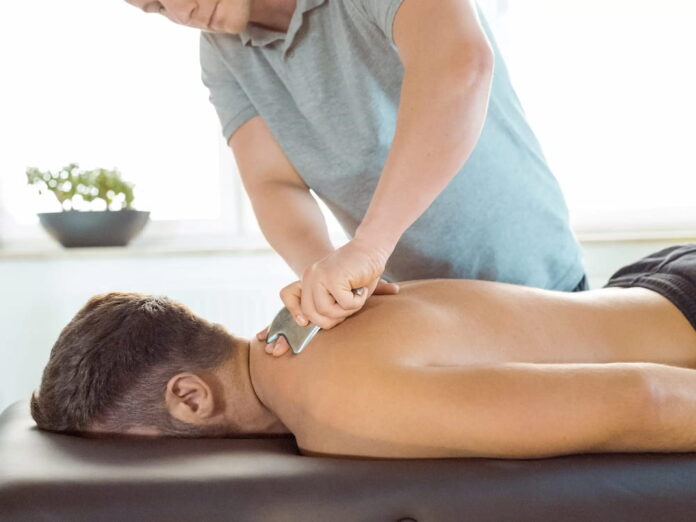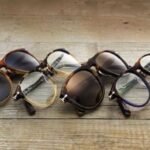Setting the Stage: Precision Bodywork for Athletic Demands
High-level training is not gentle. It grinds muscle fibers, tests tendon resilience, and locks connective tissue into microscopic knots. The wear is specific, not general, which is why one-size-fits-all relaxation rubdowns barely scratch the surface. Athletes need work that hunts down structural tension with purpose, not a half-hearted glide across the skin. Precision bodywork approaches each muscle group like a tactician surveying a battlefield. Every stroke is calculated, every angle intentional. Instead of chasing vague “feel-good” sensations, the goal is to restore performance capacity by addressing the damage where it actually lives. Anything less is wasted effort.
Understanding the St. George Approach to Deep Tissue Release
The St. George methodology is built on accuracy. Practitioners map pressure points like engineers charting stress loads, then employ slow, deliberate strokes that engage deep layers without reckless force. They target neuromuscular junctions to reset ingrained tension patterns. This is nothing like the featherlight spa routines designed for temporary calm. St. George-trained professionals undergo rigorous skill development, mastering the difference between productive discomfort and needless strain. Certification is more than a formality. It signals a standard of control and anatomical precision that casual training cannot replicate, which is exactly why these results hold up under the demands of elite athletic schedules.
Target Zones: Identifying Common Athletic Tension Points
Quads, hamstrings, calves, hip flexors, and lower back muscles form the usual suspects in chronic athletic tension. Runners lock up their calves and hamstrings until stride length shrinks. Lifters compress their lower backs and hip flexors until every squat feels heavier than it should. Cyclists battle quads that seem cast from concrete. Fascia wraps these areas like shrink film, robbing them of range and power. Simple awareness is the first filter. Tightness that persists after a warm-up, soreness that lingers beyond recovery time, or movements that feel oddly restricted are red flags. When they surface, it is time for targeted intervention.
Timing Matters: When to Schedule Bodywork Sessions
Session timing is strategy. Pre-workout activation turns sluggish muscles into responsive ones. Immediate post-training work can shorten soreness duration and kickstart nutrient delivery through increased circulation. Off-day restorative sessions rebuild structural balance before micro-irritations evolve into chronic pain. The logic is straight physiology: manage inflammation, encourage repair, and keep the nervous system from locking into a defensive crouch. Frequency should scale with workload. High-intensity cycles may demand weekly precision work, while lighter training blocks can maintain gains with less frequent appointments. Treat timing as part of your training plan, not an afterthought.
Amplifying Flexibility: Complementary Techniques and Tools
Athletes looking to extend the benefits of precision bodywork should integrate smart at-home practices. Foam rolling, when done slowly and in small ranges, can coax stubborn fascia into releasing without grinding away at tissue. A percussion device, kept at low to moderate intensity, can flush tension from quads or calves without risking overwork. Dynamic stretching before training primes joints and tissues for load. None of these replace skilled hands, but they can keep the body from reverting to baseline dysfunction between appointments. The key is subtlety and control, not brute force.
Physiology in Action: How St. George Bodywork Speeds Repair
Quality manual intervention changes biology in real time. It pulls nutrient-rich blood into damaged sites, drives lymphatic fluid out of swollen tissue, and reduces overactive nerve signaling that locks muscles into defensive contraction. Research in musculoskeletal therapy has linked such work to lower inflammatory markers and accelerated muscle fiber repair following intense effort. This is not placebo comfort. Faster fluid exchange and recalibrated neural input mean athletes can resume high-output training sooner without compounding microtrauma into lasting injury. The outcome is efficiency in recovery and a body primed for the next workload rather than limping toward it.
DIY vs. Professional: Balancing Self-Release and Expert Care
Self-myofascial release tools are accessible, inexpensive, and useful for maintaining general tissue mobility. They shine in daily upkeep but cannot match the precision of a seasoned practitioner targeting layered dysfunction. Expert care offers refined pressure control, anatomical insight, and safety in handling vulnerable structures. Book a session when pain disrupts movement quality, when repeated self-work stops yielding progress, or when preparing for peak performance events. Choosing between DIY and professional intervention should be a calculated decision rooted in performance demands, not convenience alone.
Connecting to Specialized Support
Credentials matter. A practitioner should understand biomechanics, injury history, and sport-specific load before laying a hand on a client. For athletes seeking pinpoint relief, consider a St George massage to target stubborn tension. Vet your choice thoroughly, looking for verified training backgrounds and consistent results with performance-driven clients. In skilled hands, this type of session becomes a tactical advantage rather than a generic service.
Elevating Long-Term Performance Through Consistent Care
Sporadic, reactionary work is a patch job. Consistent, targeted bodywork is infrastructure maintenance for the human machine. Over time, it unlocks stubborn movement patterns, reinforces flexibility, and keeps connective tissue pliable under load. Mental sharpness benefits too, since a body free of binding tension leaves more bandwidth for tactical decision-making and focus. Pair these sessions with disciplined nutrition, dependable sleep, and intelligent cross-training, and you create a recovery ecosystem that can handle years of high-output demand. The real payoff is sustainability. It is not about surviving the next race or season. It is about building a system that can thrive for decades.
Did you find this helpful? Check out our other helpful articles on our website.
Read Also
- Understanding the Importance of Routine Health Screenings for SeniorsDid you know that the global routine health screening market is expected to reach $105.93 billion by 2033? This highlights the rising focus on preventive healthcare. As we age, our bodies go through many changes. Staying proactive about health becomes more important with time. Routine health screenings for seniors play a vital role in maintaining… Read more: Understanding the Importance of Routine Health Screenings for Seniors
- Why Modern Retirement Facilities Are Vital for Chronic Disease CareToday’s retirement feels different from the past. Modern communities are bright, active, and full of life. They give seniors comfort while also providing the care needed for health and safety. For those living with long-term conditions like diabetes or heart disease, these places bring both support and peace of mind. Here, life doesn’t slow down-it… Read more: Why Modern Retirement Facilities Are Vital for Chronic Disease Care
- Understanding Breast Cancer Risks and Signs in Older MenMany people associate breast cancer with women. But did you know that breast cancer risk in older men is a significant health concern? Although it is rare, men can develop this disease, especially in later years. Understanding the risks, symptoms, and necessary preventive actions can lead to earlier detection and treatment, ultimately improving survival rates.… Read more: Understanding Breast Cancer Risks and Signs in Older Men
- How to Choose the Perfect Eyewear for Your Face Shape and StyleEyewear has evolved far beyond a simple vision aid—today, it’s a bold statement of personality, professionalism, and fashion sense. Whether you’re selecting your first pair or updating your look, the right frames can enhance your features, elevate your confidence, and even influence first impressions. But with endless options available, how do you find the perfect… Read more: How to Choose the Perfect Eyewear for Your Face Shape and Style
- How to Choose the Right Senior Living Community for Your NeedsHow do you know which senior living community fits your needs best? Choosing the right place can feel tricky with so many options, from independent living to assisted care. It’s important to think about daily routines, medical support, social activities, and the kind of environment that feels safe and welcoming. You also want a place… Read more: How to Choose the Right Senior Living Community for Your Needs
- Breast Cancer Prevention: The Role of Regular ExerciseIn a world where health challenges loom large, the call for proactive steps towards wellness has never been louder. One powerful ally in the fight against breast cancer is regular exercise-a proven strategy that works wonders not just for physical well-being but also for mental resilience. In this article, we delve into how exercise contributes… Read more: Breast Cancer Prevention: The Role of Regular Exercise
- The Rise of Preventative Care: Why Osteopathy Fits the MomentThe Shift Toward Prevention Healthcare is changing direction. Instead of reacting to illness, more people are focusing on how to stay healthy in the first place. Preventative care has become one of the biggest global health trends of the decade. According to the World Health Organization, 60% to 80% of chronic diseases could be prevented… Read more: The Rise of Preventative Care: Why Osteopathy Fits the Moment
- A Guide to Specialized Healthcare: Experts in Addiction Recovery, Orthopedics, and Cosmetic SurgeryIntroduction to Specialized Healthcare Finding the right expertise is crucial when facing health challenges. General care is important, but sometimes, you need a deeper level of knowledge. Specialized healthcare can offer more precise solutions and better results. It means connecting with experts who focus on specific areas of medicine. Navigating the healthcare system can be… Read more: A Guide to Specialized Healthcare: Experts in Addiction Recovery, Orthopedics, and Cosmetic Surgery









